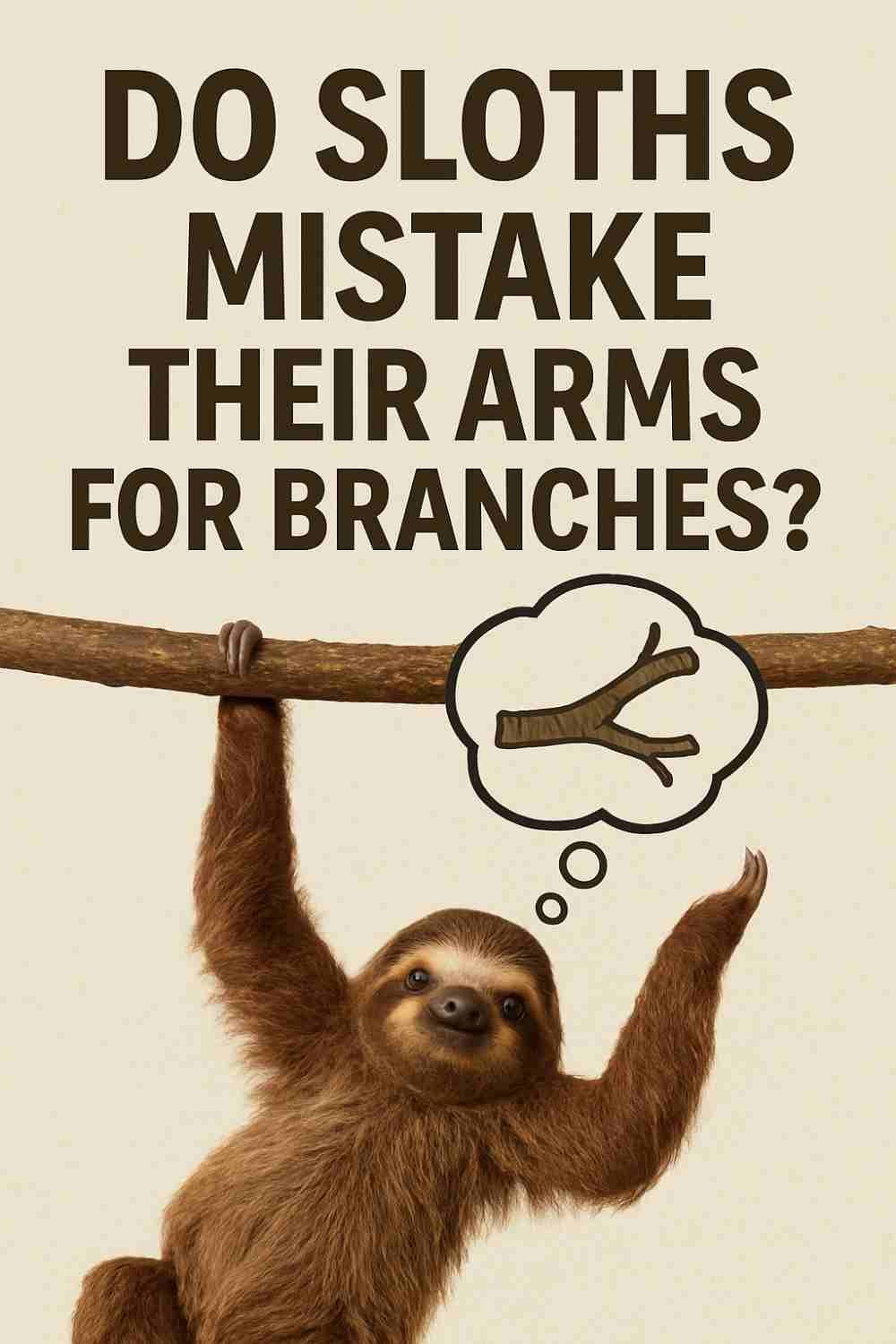 You’d think after millions of years of evolution, sloths would’ve figured out where their limbs end and the tree branches begin. But no—these slow-motion furballs occasionally grab their own arms thinking they’ve hit the jackpot with a sturdy new branch. It’s like watching someone high-five themselves in a mirror and being genuinely surprised. How does this even happen? Are they just that zen, or is there something deeper going on in those algae-covered brains?
You’d think after millions of years of evolution, sloths would’ve figured out where their limbs end and the tree branches begin. But no—these slow-motion furballs occasionally grab their own arms thinking they’ve hit the jackpot with a sturdy new branch. It’s like watching someone high-five themselves in a mirror and being genuinely surprised. How does this even happen? Are they just that zen, or is there something deeper going on in those algae-covered brains?
The Great Arm vs. Branch Debate
Let’s get one thing straight: sloths aren’t dumb. Unhurried? Absolutely. A little out of touch with reality? Maybe. But their occasional limb confusion isn’t pure idiocy—it’s a weird byproduct of how they’re wired. These creatures spend 90% of their lives upside down, swaying in the treetops like living hammocks. When your entire existence revolves around gripping branches, your arms basically become extensions of the tree itself.
Imagine you’ve been holding onto a subway pole for hours. At some point, your hand might forget it’s your hand. Sloths experience that—permanently. Their muscle memory is so tuned to grabbing things that their brain sometimes misfires. “Ah yes, this feels like a branch… wait, why isn’t it supporting my weight?”
The Science of Sloth Self-Sabotage
Neurologically, sloths operate on a “good enough” principle. Their reflexes aren’t built for precision; they’re built for endurance. A study from the Journal of Zoology found that sloths have fewer nerve pathways connecting their limbs to their brains compared to other mammals. Translation: their arms don’t always send clear “HEY, THIS IS PART OF YOU” signals.
Then there’s the whole depth perception issue. Sloths have monocular vision—each eye works independently, which is great for spotting predators but terrible for judging distances. Combine that with a lifestyle where everything around you is roughly the same texture (bark, vines, more bark), and suddenly, mistaking your forearm for a branch doesn’t seem so ridiculous.
When Zen Goes Too Far
Sloths are the ultimate practitioners of “go with the flow.” They don’t panic when they grab themselves instead of a branch; they just… try again. No embarrassment, no existential crisis. Just a slow, deliberate adjustment. It’s almost admirable. If a human did this, we’d spiral into a week-long identity crisis. Sloths? They shrug it off like, “Eh, fifth time’s the charm.”
But here’s the kicker: this quirk might actually be a survival tactic. Moving slowly means less energy wasted, fewer mistakes, and—ironically—fewer falls. A sloth that occasionally hugs its own arm is still a sloth that isn’t plummeting to the forest floor. Evolution’s like, “Sure, why not? It’s working.”
The Sloth’s Secret Superpower
We laugh at their mix-ups, but sloths are low-key geniuses at energy conservation. Their entire biology is built around doing less. Slow metabolism? Check. Low muscle mass? Yep. Even their body temperature fluctuates with the environment because why waste calories on heating?
So yeah, maybe they’re not winning any IQ tests, but they’ve mastered the art of thriving on minimal effort. While the rest of the animal kingdom is out here hustling, sloths are basically the couch potatoes of the rainforest—and they’re surviving just fine.
Why We Love Them Anyway
There’s something deeply relatable about a creature that’s both utterly competent and hilariously flawed. Sloths remind us that perfection is overrated. So what if they occasionally high-five themselves? They’re still out there, living their best slow-mo life, unintentionally becoming internet icons.
Next time you see a sloth hugging its own arm, don’t judge. Instead, ask yourself: When was the last time I embraced my own weirdness this unapologetically? 🦥

